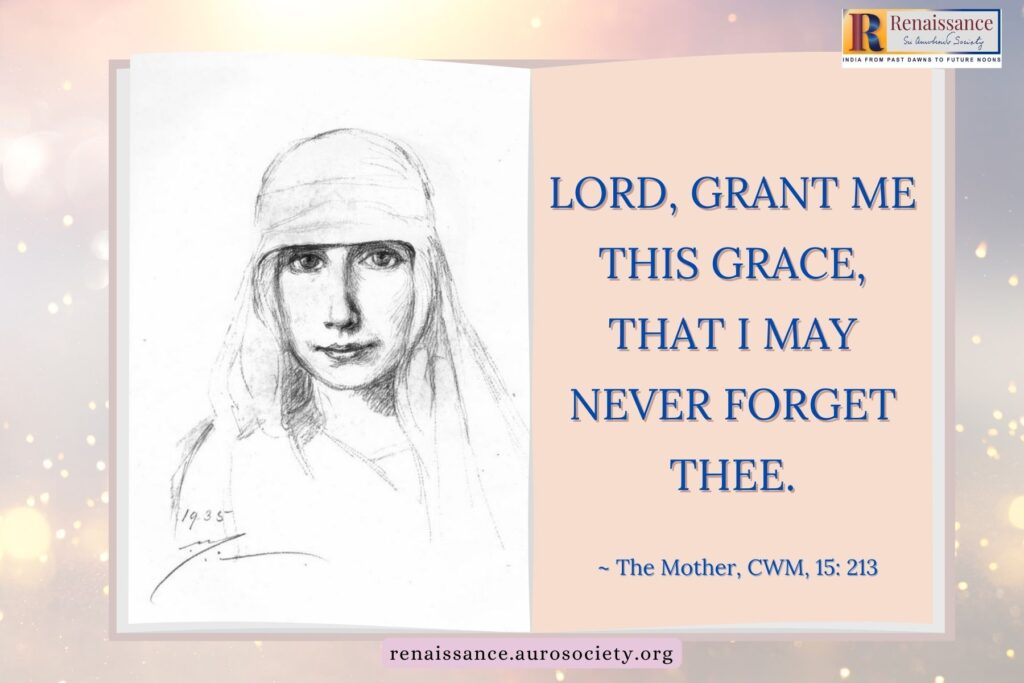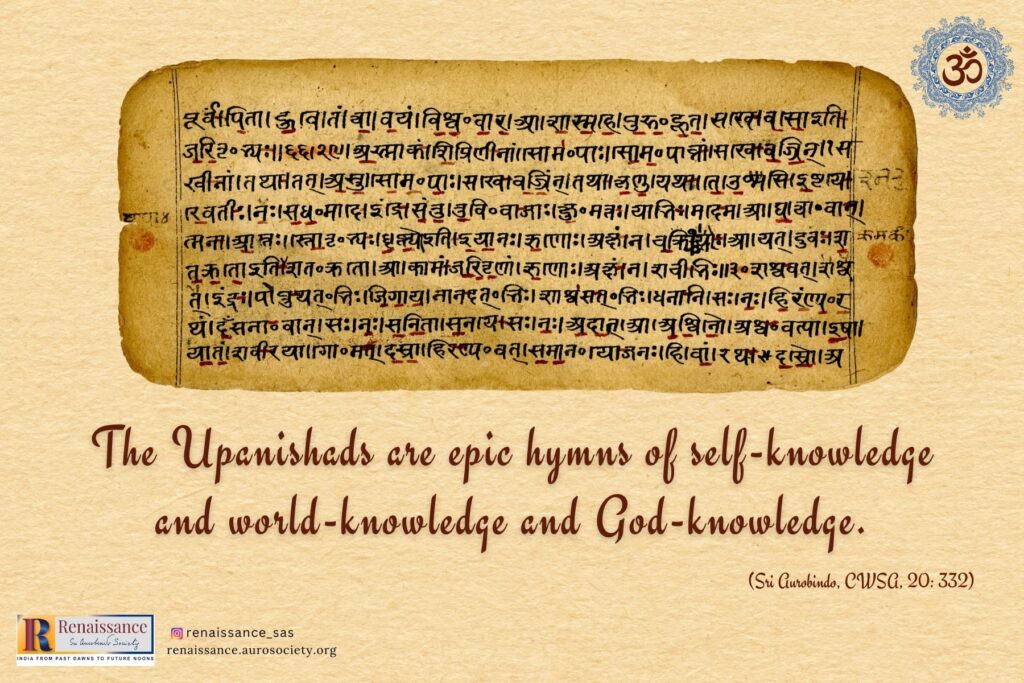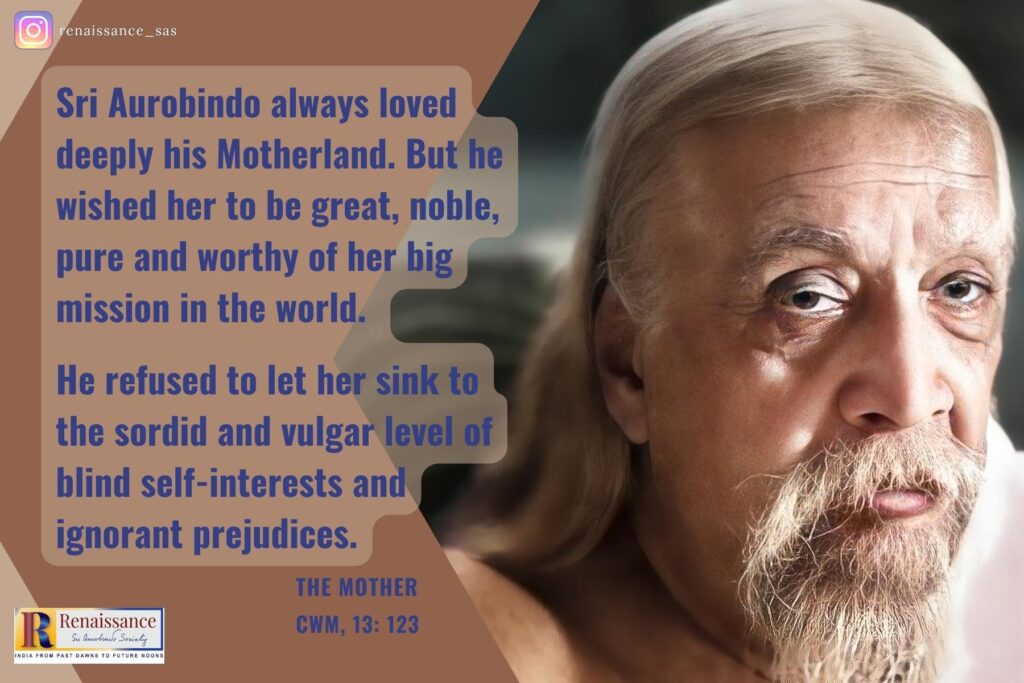Editor’s note: Narendra Murty reminds us that the conventional view which creates a dichotomy between ordinary life — and related to that is the pursuit of money — and spiritual life is not true and is in fact, inconsistent with the bold declaration of Isha Upanishad – Isha vasyam idam sarvam.

When I first heard about the Renaissance’s present issue’s theme – Money and Yoga – my first reaction was, “Money and Yoga don’t mix! I am not going to write anything this month on this topic.”
Later when my thoughts had settled down, I realized that momentarily I had forgotten my Master’s formula, “All life is Yoga.” If indeed All life is Yoga, and money is such an important part of our lives, how could that be outside the domain of Yoga? Then I realized that it is in fact a very challenging topic. So here I am writing down a few thoughts.
I recognise that my first reaction was triggered by the conventional view in which we associate money with our material, mundane life, and Yoga is connected with our spiritual life – something set apart, something high in the clouds which is far from our material concerns. The difficulty arises because we have created a dichotomy between the material and the spiritual, between the sacred and the profane; between Matter and Spirit. But is the dichotomy real? Does it really exist? Doesn’t the Isha Upanishad boldly declare: Isha vasyam idam sarvam? (Everything here is enveloped by God.)
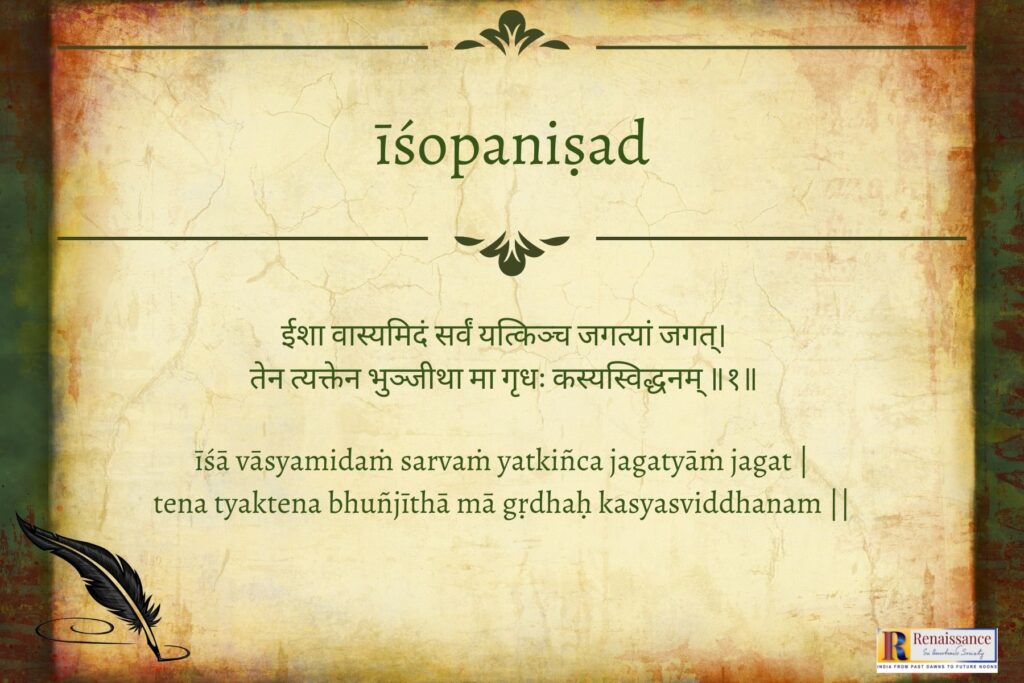
From our archives:
Sri Aurobindo on Isha Upanishad
So what causes this split between Matter and Spirit? It is the mind.
Because mind lives in the realm of duality. It cannot perceive Unity – which can only be perceived in advanced states of consciousness where the dichotomy between Matter and Spirit is dissolved. And the purpose of Yoga is to experience those states firsthand. But who is going to experience those states? Some disembodied spirit – some Videhi Atma? Surely not. It has to be experienced while living in this body itself.
Gautam Buddha after torturing his body with six years of rigorous austerities and reducing himself to an emaciated skeleton finally had a full meal of porridge offered to him by Sujata. And with that full belly and a certain level of physical comfort, took the highest flight into the realms of the super consciousness and attained Nirvana that very night under the Bodhi tree. Thereafter, he understood that the material base cannot be ignored and he gave a central position to The Middle Path in his teachings. Hence, the Zen Master Hakuin declared dramatically:
This very earth, the Lotus paradise;
This very body, the body of Buddha
So physical existence is important. And that is where money comes in.
Yes, money is important. For our physical and vital needs. As per the principles of Sanatana Dharma – out of the four pursuits of life, Artha and Kāma, i.e., the money and means for the maintenance of life (Artha) and satisfaction of physical and emotional desires (Kāma) are the legitimate pursuits of life along with Dharma (ethical living) and Moksha (spiritual liberation).
We are not taught that we ought to shun Artha and Kāma in favour of Dharma and Moksha. In fact, we can go higher into the realms of Dharma and Moksha only when we stand firm on the terra firma of a comfortable physical and vital well-being. And for that, money is required.
We cannot physically survive without money (unless someone else is bearing our burden).
And Kāma cannot be satisfied with an empty pocket. The support of our physical existence (food, clothing and shelter) requires money. The satisfaction of our vital desires (sex, sense enjoyments, pastimes and entertainment) requires money. We cannot deny this reality. We cannot ignore them and straightaway launch ourselves into the path of Dharma and Moksha.
May be that option is open only to the Sannyāsis, but we are not discussing Sannyās here. We are discussing ordinary people who are practicing Yoga. In any case, Yoga is not the path of Sannyāsa. Yoga is not about wearing a uniform and retreating into a monastery. Yoga is all about living in the midst of the battlefield of life and facing the challenges of life like Arjuna. For Kurukshetra is indeed a metaphor for the life in the world.
We all are bewildered Arjunas standing in our own Kurukshetra-s and Yoga is our means for fighting and winning in this mighty battle.
In order to fight this battle, our physical and vital wellbeing is essential. Even to practice Yoga, our physical and vital wellbeing is essential. That much is accepted and granted. And for that, we require money. So, what is the problem? The problem is, we do not know where to stop.
We keep on accumulating money even when it is way beyond what we require for a comfortable, even a luxurious life. Earning money itself becomes our sole motivation in life. We have totally tossed aside the ends of Dharma and Moksha from our lives and believe that we exist only to satisfy the ends of Artha and Kāma. And then we wonder why we are miserable!
We are miserable because we are living life at a very low level, almost at the level of an animal.
But we are not built that way. We are meant for higher things. That is why our soul cries out for a higher meaning and purpose. We have created a distorted perception in our minds about money and have accorded an inordinately high position to it in our lives way beyond all measure and proportion. We believe that money is the solution to all the problems of life. Though we get disillusioned at every step, still our conviction in its allure and promise as a panacea for all evils, continues. Money is no longer a means to an end (physical and vital wellbeing) – but it becomes the means and the end.
Why do we pursue wealth with such dedication and single mindedness? It is because we feel that through wealth, we can control people and the circumstances of our lives. We feel we can control and possess what we own. We amass and accumulate to achieve power.
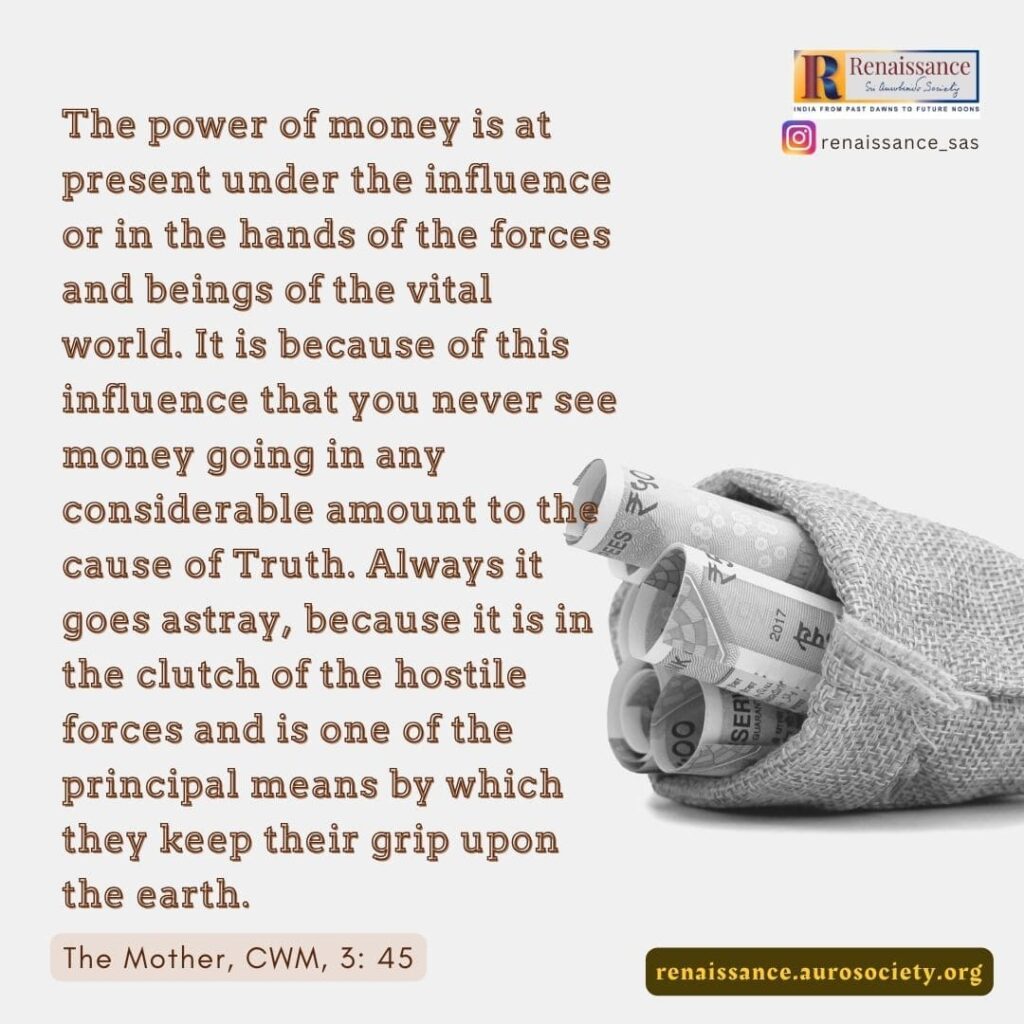
Storytime
It happened once. The Sufi saint Farid was passing through a marketplace along with his disciples. They saw a man leading a cow with a rope tied round its neck. Farid stopped his disciples and asked them to take a look at the scene. Then he asked them:
“Tell me, of these two – which is the master? The man or the cow?”
What a question! the disciples wondered. They said:
“What are you asking? Of course, it is the man who is the master because the cow is his property. That is why he has got that rope round its neck!”
Farid smiled. Then he enquired gently:
“All right. Suppose there is a commotion in the marketplace right now and the man gets separated from the cow and there’s utter confusion with people running around everywhere. Then who will run around and search for the other? The man or the cow?”
They replied: “Certainly the man would search for the cow.”
Farid: “Not the cow?”
“No.”
Farid: “Then who is tied to whom? Who is the master?”
The disciples remained silent and began to think.
Obviously, the answer was not as simple as they had supposed. And then Farid gave his lesson:
“The rope which you see around the neck of the cow is actually around the neck of the man. Because he is tied to the cow. The cow is not tied to him.”
Possessions put a rope round our necks. We too become slaves of what we own. That is why Sri Aurobindo had written in The Mother:
The seekers or keepers of wealth are more often possessed rather than its possessors;. . .
~ CWSA, Vol. 32, p. 10
Let us make a list of possessions that we own; things we cannot do without. Those are the ropes round our necks. We don’t own things. Rather, we are owned by things. We are not the masters of what we own. We are the slaves of what we own. Because we cannot do without them.
One who is a master is free. But one who is a slave cannot claim to be an owner.
We think we are the masters of what we possess in life – wealth, career, family, house, car or whatever. But in reality, we are the ones who are possessed. Things are in the saddle… And ride mankind… Emerson had said. Money and possessions create bondage and tie us down to the physical and vital levels of our being.
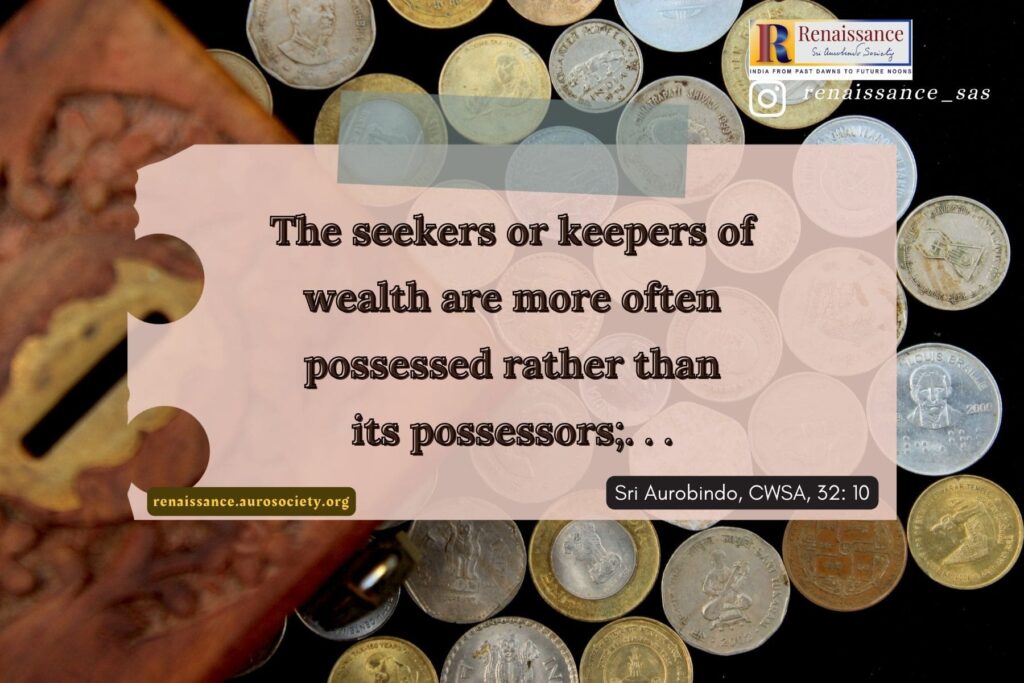
So, what is wrong with living with the sole purpose of earning money?
If we draw an analogy and equate our being with a building, it is like living our entire lives in the basement (physical) and the ground floor (vital) of a multi-storeyed building. It is like living in that building and never going to the upper floors; never going to the roof to look at the open sky (spiritual liberation); never seeing the sunlit snow peaks (higher states of consciousness) but to remain forever in the darkness of the basement and the ground floor amidst the traffic noise of buying, selling and amassing (physical and vital needs and pleasures).
That is what is wrong with it. Our lives would be lost in the nether world of material darkness and we would never know the joys of the sunlit skies and the glistening snow peaks of a spiritual life.
A thought was there that planned, a will that strove,
~ Sri Aurobindo, Savitri, Book II, Canto IV, p. 149
But for small aims within a narrow scope
Yes, we think and make numerous plans. We exercise tremendous will to strive and to achieve the various goals of life. But to what ends? For small aims within a narrow scope. To satisfy only our physical and vital desires. The house, the car, bank balance, property, sense pleasures, entertainment and chasing after power, pelf and position.
Wasting unmeasured toil on transient things.
~ Sri Aurobindo, Savitri, Book II, Canto IV, p. 149
Continuous toil, work, stress, anxiety, burn-out – all for what? To achieve something of enduring value?
No. All this unmeasured toil to achieve and grasp transient things which in any case are not permanent. Because material things can give only temporary pleasures. If they had the capacity to give us permanent happiness, then rich people would never have been dissatisfied about anything; would never have committed the occasional suicide. Or sought psychiatric help. You would find that poor people usually never require psychiatric treatment. It has been observed that the diseases of the psyche afflict mostly the rich and the well to do. Think about that.
It knew itself a creature of the mud;
~ Sri Aurobindo, Savitri, Book II, Canto IV, p. 149
It asked no larger law, no loftier aim;
It had no inward look, no upward gaze.
Creature of the mud – steeped in material living.
When we live a purely materialistic life merely for our physical and vital pleasures, then no larger law works for us. We do not have any higher values and do not strive for the heights. We are too happy to roll in the mud of worldly life. And we never look inward; we never gaze upwards. That is, we never examine our lives; we never aspire for a higher life.
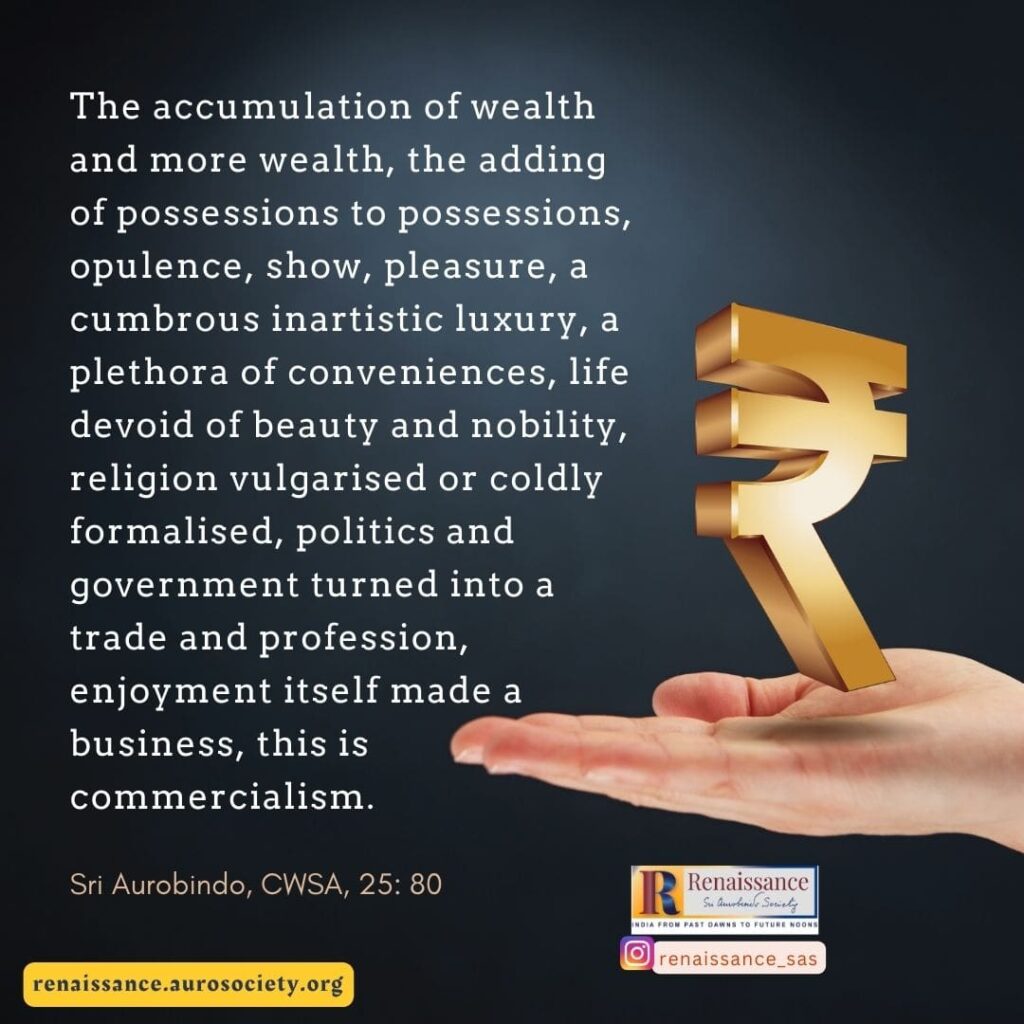
So, from the basement of our physical life, from the ground floor of our vital life, how do we go to the upper floors and to the roof?
By climbing up the stairs of course! And that, is Yoga. This ascension to the higher levels of our own being is Yoga. Even the basement and the ground floors have the stairs going through them. That is why All life is Yoga.
To ascend from the basement to the terrace, we have to use the stairs at each floor. Hence even the physical and the vital (where money rules) are a part of our Yoga. Because that is to be used as a base, as a stepping stone for our ascent. But we should make the effort of climbing the stairs (Yoga) and strive to go to the upper floors (higher states) and finally, to the roof (Supermind). For there we can experience the sunlit sky and the glistening snow peaks of our own being. And it is Yoga that would take us there.

About the author: Narendra Murty is the author of two books Eating His Money: The Antics of a Metaphysical Clown and An Odyssey of the Mind: Journeys in the Modern Mindscape. He is presently working as a volunteer for the AuroLeadership project of Sri Aurobindo Society, Pondicherry.
Click HERE to read more by Narendra Murty in Renaissance
~ Design: Beloo Mehra

